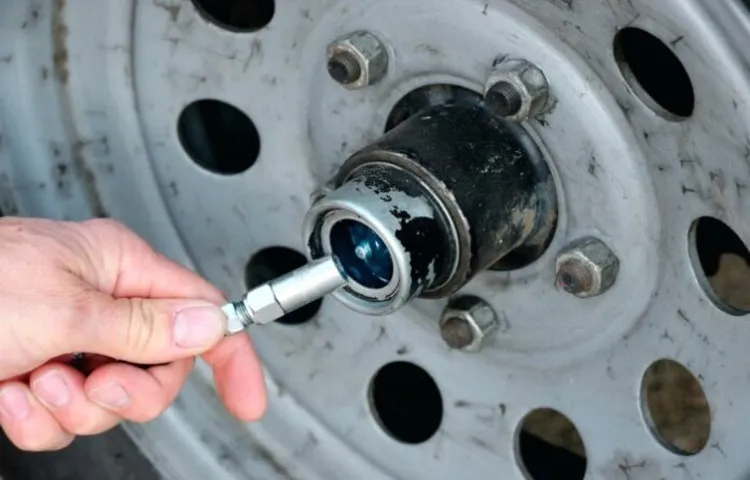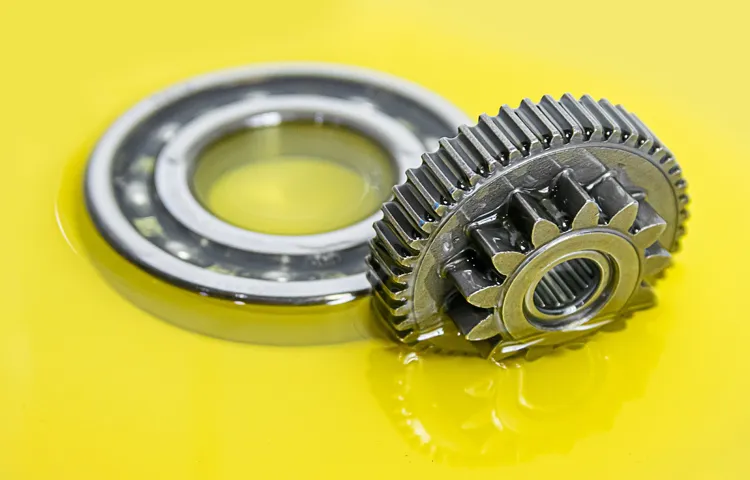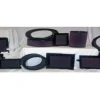Mixing wheel bearing grease doesn’t seem like rocket science, but there’s more to it than meets the eye. Proper wheel bearing lubrication is vital to ensure smooth operation, longevity, and safety of your vehicle. So, figuring out what types of grease to mix, how much to use, and when to do it should be on every car owner’s radar.
In this article, we’ll walk you through the basics of mixing wheel bearing grease, sharing some tips and tricks to help you get it right. Whether you’re a seasoned mechanic or a DIY enthusiast, you’ll find valuable information to keep your wheels rolling smoothly. So, buckle up and let’s dive in!
Table of Contents
Understanding Wheel Bearing Grease
If you mix different types of wheel bearing grease, it can lead to a host of problems. Greases are formulated with different materials based on their application. Mixing them can change their composition, making them ineffective and potentially harmful to your vehicle’s wheel bearings.
For instance, some greases may contain incompatible additives that can react with each other and form a new compound that can clog your wheel bearings, reducing their lubricating ability. Moreover, the thickness and viscosity of the grease may differ, leading to improper lubrication. If you’re unsure about which type of grease is best for your bearings, consult your vehicle’s manual or ask a professional mechanic.
In any case, if you’ve already mixed different types of wheel bearing grease, it’s best to remove them and start afresh with the appropriate type. It’s always better to be cautious than to risk damaging your vehicle’s bearings.
What is wheel bearing grease?
Wheel bearing grease serves an essential purpose in ensuring the smooth operation of your vehicle’s wheels. It’s a lubricating substance that fills the space between the wheel bearings and the hub, preventing metal-to-metal contact and reducing friction. This friction reduction prevents wear and tear and heat buildup, preventing damage to your vehicle’s wheels over time.
Wheel bearing greases come in different variations, ranging from synthetic to petroleum-based. Synthetic greases stand out in their exceptional resistance to high temperatures, making them ideal for heavy-duty applications. On the other hand, however, petroleum-based greases are cheaper and more accessible.
The type of grease to use depends on your vehicle’s make and model, as well as the environment in which it operates. To ensure maximum protection of your wheels and prolong their lifespan, it’s essential to use the right grease and follow the manufacturer’s guidelines. Remember, proper maintenance of your vehicle’s wheel bearings will save you from costly repairs in the long run.

Types of wheel bearing grease
Wheel Bearing Grease Wheel bearing grease is an essential lubricant that helps to keep the bearings in your vehicle running smoothly. It comes in different types, each with its specific properties that make it suitable for various applications. The most common types of wheel bearing grease include lithium grease, synthetic grease, marine grade grease, and high-temperature grease.
Lithium grease is the most common type of wheel bearing grease and is suitable for use in most vehicle applications. Synthetic grease, on the other hand, is perfect for high-speed and heavy-duty applications due to its high-temp and load-bearing properties. Marine grade grease, as the name suggests, is designed for use in boats and other marine applications, where the grease is exposed to saltwater and harsh conditions.
Finally, high-temperature grease is perfect for use in high-heat environments where conventional grease will not perform well. Understanding the various types of wheel bearing grease can help you choose the right one for your vehicle, ensuring optimal performance and longevity.
Importance of using the correct grease
When it comes to ensuring the safety and longevity of your vehicle, using the correct grease for your wheel bearings is crucial. Wheel bearing grease is a lubricant that is specifically formulated to withstand high levels of pressure and heat, ensuring that your wheels spin smoothly and without issue. Using the wrong type of grease could result in your bearings failing, causing your wheels to lock up and potentially leading to dangerous situations while driving.
To avoid this, it’s important to understand the different types of grease available and their compatibility with your vehicle’s bearings. So, before you head to the garage to change your grease, take the time to do some research and find the right type of grease that will keep your wheels spinning smoothly and safely on the road.
What Happens When You Mix Wheel Bearing Grease?
Wondering what happens if you mix wheel bearing grease? Mixing different types of grease can lead to adverse effects on your vehicle’s performance and safety. If different greases have different consistencies, additives, and chemical compositions, mixing them together can alter their properties. It can make the combined grease less effective and even cause it to break down faster, leading to reduced lubrication and increased friction.
Over time, this can lead to damage to the wheel bearings and other parts of the vehicle. That’s why it’s essential to use the same type and brand of grease recommended by the manufacturer and avoid mixing them unless you’re sure they’re compatible. When it comes to wheel bearing greases, it’s always better to be safe than sorry!
Impact on performance and safety
When it comes to mixing wheel bearing grease, it can have a significant impact on both performance and safety. Mixing different types of wheel bearing grease can result in a product that lacks the necessary lubrication properties, leading to increased friction and wear of the bearings. This can cause overheating, premature failure, and even metal-to-metal contact, which is not only harmful to the bearings but also to other surrounding components.
Moreover, mixing incompatible grease can cause chemical reactions that degrade the grease’s properties, leading to a loss of viscosity and adhesive capabilities. These reactions can also produce debris, which can contaminate the bearing, causing further damage. Additionally, a failed wheel bearing can lead to serious safety issues, such as loss of control, steering wheel vibration, and even complete wheel detachment.
In summary, it’s crucial to use the recommended wheel bearing grease for your vehicle, which can usually be found in the owner’s manual or through a reliable mechanic. Using the proper grease ensures that your vehicle runs smoothly and safely, and that your wheels continue to perform to the standard required. Mixing wheel bearing grease can cause severe and costly issues that are easily avoidable by sticking to the recommended products.
Effect on the lifespan of components
When it comes to mixing wheel bearing grease, it’s important to understand the effect it can have on the lifespan of your components. Mixing different types of grease can cause chemical reactions that can result in a breakdown of the grease, leading to premature wear and tear on your bearings. This can be especially damaging if you’re using grease that isn’t compatible with the type of bearings you have.
It’s essential to use only the recommended grease for your specific bearing type and to avoid mixing different types of grease altogether. Doing so will ensure that your components remain in good condition and operate smoothly for their intended lifespan. Remember, using the wrong grease or mixing different types can end up costing you more in the long run if it leads to premature component failure or costly repairs.
Always stick with the recommended grease and consult with a professional if you’re unsure.
Potential for contamination and damage
When it comes to wheel bearing grease, mixing different types can be a recipe for disaster. Not only can mixing incompatible greases potentially cause contamination and damage, but it can also reduce the effectiveness of the grease altogether. This is because different greases are designed with different properties and additives that may not work well together.
For example, mixing a high-temperature grease with a low-temperature grease could cause the mixture to become too thin or too thick, leading to increased friction and wear on the bearings. It’s essential to make sure you’re using the correct grease for your application and to avoid mixing types unless directed to do so by the manufacturer. By using the right grease for your needs, you can ensure the longevity and performance of your equipment.
How to Avoid Mixing Wheel Bearing Grease
Mixing wheel bearing grease can cause serious damage to your vehicle. When different types of grease are mixed, the properties of each individual grease are altered, causing the resulting mixture to malfunction or deteriorate rapidly. If you are unsure which type of grease is currently in your bearings, it’s best to clean out the old grease thoroughly before adding a new one.
This will ensure that there is limited room for contamination and that the new grease can be added evenly. It’s also important to only use one type of grease per bearing to avoid any possible interactions that could lead to breakdowns or other issues. Taking these precautions can ensure that your wheel bearings will work smoothly, last longer and avoid any unnecessary repairs.
Remember, it’s always better to spend a little more time preventing wheel bearing grease issues than having to spend a lot more money on costly repairs.
Tips for preventing grease mixing
Preventing grease mixing is crucial in keeping your wheel bearings in good condition. The first and foremost tip is to always use the recommended type of grease for your specific vehicle. Mixing different types of grease can result in chemical reactions, leading to the breakdown of the grease and reducing its effectiveness in providing lubrication.
Another important factor is to clean the bearings thoroughly before applying grease to prevent any contaminants from mixing with the grease. It is also essential to ensure that your hands are clean and free of any other substances before handling the grease. This will prevent any foreign substances from mixing with the grease during application.
Lastly, make sure to keep your grease gun clean and free of old or contaminated grease. These tips will significantly reduce the risk of grease mixing and extend the life of your wheel bearings.
When to seek professional maintenance
If you start noticing unusual noises coming from your car’s wheel bearings, it’s time to seek professional maintenance. Failing to take care of wheel bearings can cause numerous problems, including mixing wheel bearing grease. This occurs when different types of grease are mixed, which can lead to a breakdown and damage to the bearings.
To avoid this, it’s essential to stick to the same type of grease recommended by the manufacturer and ensure that it’s compatible with the grease already in the bearing. Professional mechanics will have the expertise and tools necessary to not only identify the problem but also fix it properly. Don’t wait until the problem worsens; taking care of your car’s wheel bearings now can save you time and money in the long run.
Conclusion
Mixing wheel bearing grease can lead to a slippery slope of uncertain outcomes. Much like a chemistry experiment gone wrong, the resulting concoction could range from a smooth-as-butter ride to a disastrous breakdown. So, unless you’re a grease-mixing daredevil, it’s best to stick with one type of grease per application.
A steady and reliable ride on the road will always be the result of cautious and proper maintenance of all your vehicle’s moving parts.”
FAQs
What are the consequences of mixing different types of wheel bearing grease?
Mixing different types of wheel bearing grease can lead to poor lubrication, which can cause premature wear on the bearings, heat buildup, and ultimately, bearing failure.
Is it safe to mix different brands of wheel bearing grease?
It is generally not recommended to mix different brands of wheel bearing grease because they may have different chemical compositions and could lead to poor lubrication, reduced performance and potential safety hazards.
How do I know which type of wheel bearing grease to use for my vehicle?
Consult your vehicle owner’s manual or the manufacturer’s recommendations to determine the appropriate type and specification of wheel bearing grease for your particular make and model.
What is the difference between high-temperature and regular wheel bearing grease?
High-temperature wheel bearing grease is specifically designed to withstand higher temperatures and heavy-duty applications, whereas regular wheel bearing grease is intended for general-purpose use. Make sure you choose the right type of grease for your application to ensure optimal performance.
Can I use regular grease for my wheel bearings if I run out of specialized wheel bearing grease?
It’s not recommended to use regular grease as a substitute for specialized wheel bearing grease because it may not have the same chemical composition, which can lead to poor lubrication, reduced performance, and safety risks. It’s always best to use the recommended grease for your particular application.
How often do I need to change the wheel bearing grease in my vehicle?
The recommended interval for changing wheel bearing grease varies depending on the environmental conditions, driving habits, and vehicle usage. Consult your vehicle owner’s manual or the manufacturer’s recommendations for specific intervals.
Can I mix lithium and polyurea-based greases for my wheel bearings?
It’s not recommended to mix lithium and polyurea-based greases for your wheel bearings as they have different chemical compositions that may not be compatible with each other. It’s always best to stick with the same type of grease recommended for your specific application.



